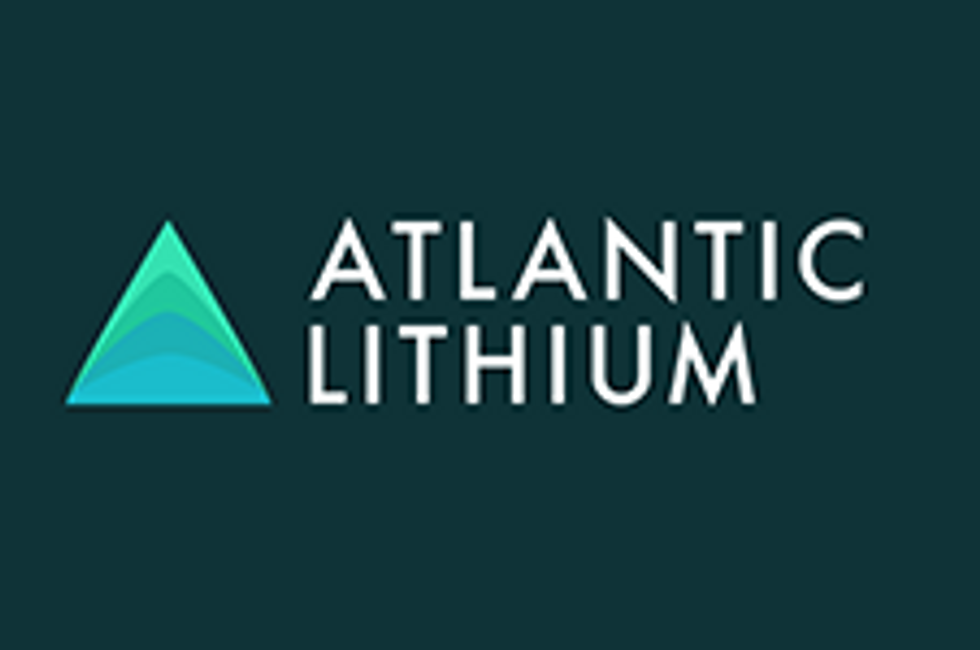Chris Berry: The Next Potential Battery Metals Opportunity
Chris Berry of House Mountain Partners shares his thoughts on the lithium and cobalt markets, and discusses an emerging battery metals opportunity.
Chris Berry, founder of House Mountain Partners, is a well-known commentator on the battery metals space, and at Mines and Money New York he took the time to share his thoughts on lithium, cobalt and another potential opportunity.
Speaking about lithium, Berry commented on the impact of FMC’s (NYSE:FMC) planned lithium IPO, saying, “I think … it will set a benchmark for lithium valuations.”
On the cobalt side, Berry addressed Tesla (NASDAQ:TSLA) CEO Elon Musk’s recent comments that he would like to see the cobalt content of lithium-ion batteries drastically reduced.
“Does that mean that cobalt is now a screaming sell and you should run away because we’re never going to use cobalt in batteries? The answer is no,” he said.
Finally, Berry gave some insight on where investors should look next in the battery metals space. “I think the next story, or maybe perhaps the next wave of investment in the battery metals space, will come from recycling,” he said, adding, “I think it’s a potentially huge opportunity.”
Listen to the interview above for more insight from Berry on the lithium and cobalt markets. You can also read the transcript below.
INN: One of the main developments in the lithium space that investors are paying attention to right now is FMC’s lithium IPO, which is set to happen in Q4. Can you briefly explain for those new to this space why this is so important?
CB: Sure. One of the issues with lithium that investors have always struggled with is the fact that there’s no publicly listed pure play. If you bought Albemarle (NYSE:ALB) shares or SQM (NYSE:SQM) shares, you’re also buying borate businesses or potash businesses. Similar with FMC, lithium is really only about 10 percent of their business with respect to the revenues.
So it’s important because this will be one of the first instances of a publicly listed lithium pure-play vehicle … it’s investible, number one. But number two, I think more importantly it will set a benchmark for lithium valuations. Right now there’s a lot of debate about what is Albemarle’s business, what is FMC’s lithium business, what is it really worth? And it’s hard to pick it apart. And so I think the IPO is slated for October, to your point, and so my sense is that the main catalyst — it’s going to tell us is the space overvalued, is it undervalued relative to what the market will value the FMC IPO at.
INN: Following on from that, if FMC’s IPO is successful, would you expect to see other major producers also spin off their lithium businesses?
CB: I think it will be successful, just to answer a question you didn’t ask. But nevertheless, I think that it’s a little bit of a case study. I’m sure that Albemarle in particular is probably watching this to see how it’s received. The other thing to keep in mind is that FMC is going to raise about half a billion dollars, and so there’s sort of an M&A, or an acquisition predominantly, strategy in line with this IPO. And so my sense is that based on what you see with this IPO — the oligopoly in and of itself gets bigger and also gets stronger. I guess to come back to your original question, I think everybody else in this space will be watching to see how successful it is. Yes, for sure.
INN: So that’s set to happen towards the end of the year. In the next few months, what other factors should investors be paying attention to with regards to lithium?
CB: Honestly, it’s been kind of an unhappy 2018 in the lithium space. If we were having this interview maybe January 1, I’d be sitting here pounding the table saying, “things are going to be great. Here are all the catalysts,” etc. etc. There have been a number of curveballs in the lithium space. Obviously the confusion around the Corfo and the SQM deal has a lot of people worried about oversupply, and of course in addition to that the now-infamous Morgan Stanley (NYSE:MS) report.
Irrespective of a lot of the errors in the report, in my opinion, a lot of people took their foot off the gas with respect to lithium investing, and it’s no secret that we’re sitting here in midtown in New York City, and probably every hedge fund within a five-block radius of us right now is short lithium. And a lot of it has to do with these uncertainties or negative catalysts in the space. I think it’s going to take another quarter or two to really work through those. I think you’re going to need to see continued pricing strength in lithium and also the demand story that we’re all comfortable with now continue apace.
INN: For investors — we’re seeing a pull back in lithium. Is this an opportunity to be looking at stocks and things like that?
CB: Yes. I think it depends on your time frame and if you’re a trader vs. an investor. Obviously traders that have gone short the lithium names have made a killing. Congratulations for that. But it really I think does provide an opportunity [for] longer-term investors … to take a look at the space and say, “okay, who has the optimal management team that can build businesses, build lithium businesses in particular, and also has the balance sheet to grow as well.”
I think that’s where the FMC IPO comes into play, and also another potential catalyst in the lithium space is the Nemaska Lithium (TSX:NMX) fundraising, which is on everyone’s mind right now, literally all over the world. And so, a successful fundraising there, whether or not it’s equity, debt, streaming, all of these different components, I think will also set a benchmark or set the stage for successful lithium investing going forward.
INN: Let’s switch over to cobalt, another important battery metal, and I think that’s actually what you’re here to speak about. Last week, we saw Tesla announce that it’s looking to reduce the cobalt content in its batteries to almost nothing. Do you see that happening?
CB: You know, that’s no secret. I was in China a week and a half ago and met with cathode manufacturers who have for some time been actively trying to minimize cobalt use, or I guess get rid of it entirely. And again, it’s probably a much longer conversation than you and I will have here today. But it’s no surprise that they admitted that, and I think they’re just echoing what’s happening in the battery space overall. So does that mean that cobalt is now a screaming sell and you should run away because we’re never going to use cobalt in batteries? The answer is no. My sense is that obviously when you think about — like Benchmark Mineral Intelligence has their megafactory tracker — we’ll be building a lot more batteries, they’ll just have a lot less cobalt. Overall I think demand could go up, probably triple from these levels.
INN: That ties into the next question. A lot of analysts say that even if cobalt is reduced in batteries, cobalt demand will still surge due to overall increasing demand from the EV sector.
CB: Yes, I think it will. I think it will be, this is my personal opinion, less robust than a lot of people think, because I think that the real wild card in this whole lithium-ion space is battery chemistry and how quickly that can change, and I think it could change a lot faster than people think. So I’m bullish on cobalt. I don’t necessarily have a price target I’m prepared to discuss, either higher or lower or anything like that, but I can pretty much guarantee that the average battery in one to three to five to 10 years from now will be using a lot less cobalt than typical chemistries today.
INN: Final question. What do you think is next for the battery metals sector as a whole? How much attention should investors be paying to developments such as solid-state batteries or the potential of vanadium-flow batteries?
CB: I think with respect to solid state or any competing battery chemistry, it never hurts to be educated. I think the next story, or maybe perhaps the next wave of investment in the battery metals space, will come from recycling. There’s a lot of buzz now about nickel and so on and so forth, and that’s an interesting case, and copper is as well. But my sense is that one of the things that I found interesting about lithium from a few years ago relative today, cobalt from a few years ago relative to today, is they came out of nowhere in terms of investment opportunities, and it took people a long time to really get up to speed. And I feel like we’re with battery recycling today where we were with cobalt, say, two or three years ago. I think it’s a potentially huge opportunity — and again, a lot of nuances there that we won’t get into over the next minute or two. But a lot of really interesting opportunities to come out of that space in the next couple of years.
INN: Just briefly, are we seeing people recycling right now or is it more of a developing thing?
CB: We are seeing people recycling right now. Umicore (EBR:UMI) is a big battery recycler, it happens in China. It’s not rare by any stretch of the imagination, the question is economics. When you think about a battery, you’ve got lithium, you’ve got cobalt, you’ve got manganese, you’ve got all of these different raw materials, and so the separation and the refining has really rendered most of it uneconomic. So on the one hand, you’ve got this total tsunami of battery capacity coming onstream. We’re going to have to do something, whether or not it’s the OEMs that take control or the battery manufacturers themselves. But the economics have really I guess given everybody a lack of a reason to invest in the space, and I think that’s about to change.
Don’t forget to follow us @INN_Resource for real-time updates!
Securities Disclosure: I, Charlotte McLeod, hold no direct investment interest in any company mentioned in this article.
Editorial Disclosure: Nemaska Lithium is a client of the Investing News Network. This article is not paid-for content.
The Investing News Network does not guarantee the accuracy or thoroughness of the information reported in contributed article. The opinions expressed in these interviews do not reflect the opinions of the Investing News Network and do not constitute investment advice. All readers are encouraged to perform their own due diligence.






